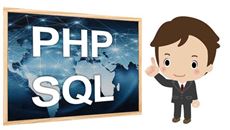- Delivery Method Online
- Professional Certificate
- 24hrs Suggested Study Time
- 3 Months Access
- Tutor Support
- Study On Any Device
- 17127 Students
Java Programming Fundamentals

An experienced Java programmer introduces important Java topics with clear, step-by-step instructions.
If you want to learn computer programming but don't have any prior experience, you'll enjoy a tour of Java, one of the most widely used computer languages in the world. It's a breeze to learn in a friendly and supportive environment. Start with the basics of programming and go on to write your own programs and integrate input and output, calculations, decision making, and loops. Build your knowledge and confidence with easy-to-understand examples and plenty of skill-building exercises. So whether you just want to try it out to see if you like it or plan on doing more with Java, this is a great place to start!
We'll use the latest release of Java, from Oracle, the company that maintains and supports the language. We'll also use BlueJ, a graphical development environment designed especially for students. Both are free open-source products, and I'll give you the proper instructions to download them. By the time we're done, you'll be comfortable with Java programming and ready for more!
Courses are delivered to you through expertly executed lessons, online instruction and interaction with like-minded students. Our courses are designed to deliver all of the benefits of studying in a classroom whilst giving you the flexibility to study at a time and place to suit your needs. You can access your classroom 24/7 from any device with an internet connection.
This course has a 3 month duration. You'll complete comprehensive lessons, quizzes and assignments before submitting your final exam at the end of the course to achieve your certificate. Courses must be completed within the 3 month access period.

Brian Hall
Brian Hall is a software architect with more than 15 years of experience building software tools in the film visual effects industry. Over the course of his career, he has successfully led teams and mentored engineers in good software development ... Read more
Read Brian Hall's ProfileFrequently Asked Questions
What people are saying about our courses
The Learning Environment
From the moment that you enrol in the Java Programming Fundamentals you will become an integral part of our learning community. You'll find yourself with the freedom to learn at a speed that suits you, on any device, from anywhere in the world. Achieving your career goals no longer has to mean compromising family and work commitments.
Ready to get started?
Enrol NowOur Values
Learn At Your Own Pace
We believe in personalised learning. That's why we provide all the tools and support you need to succeed at your own pace. With flexible learning, you'll stay motivated and retain more information. Plus, you can balance your studies with work and family commitments to make your dreams a reality.
We Won't Break The Bank
Education should be accessible to anyone who wants to learn. That's why we offer some of the most competitive prices in the industry with payments plans for just $25 per week. Investing in your future is a smart choice and doesn’t have to break the bank.
Industry-Led Courses
There's no better way to learn than from experts with years of experience in your field. That's why each of our 200+ industry-led courses are designed to give you a real-life perspective on your industry. With our expert mentors, you'll learn from people who have a wealth of knowledge and experience, and who are passionate about sharing it with you.
Get The Personal Support You Deserve
At Vibe Learning, we're real people who are dedicated to providing you with personal support every step of the way. Our industry experts are not only professional and knowledgeable but also incredibly passionate about sharing their expertise with you. With their guidance, you'll gain invaluable insights and practical knowledge to help you succeed.
Still looking?
Check out the following courses related to Java Programming Fundamentals:



